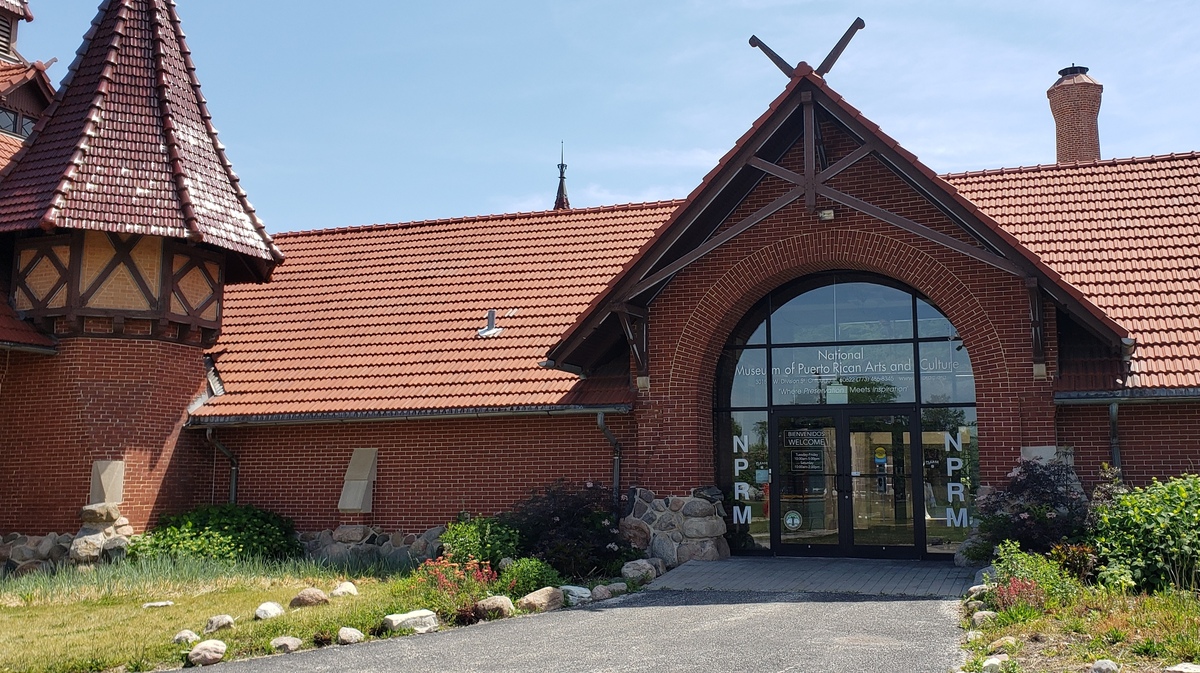
The National Museum of Puerto Rican Arts & Culture in Chicago.
The National Museum of Puerto Rican Arts & Culture
hide caption
toggle caption
The National Museum of Puerto Rican Arts & Culture

The National Museum of Puerto Rican Arts & Culture in Chicago.
The National Museum of Puerto Rican Arts & Culture
Billy Ocasio feels like one of country’s luckier museum directors. He runs the National Museum of Puerto Rican Arts and Culture, still standing strong in Chicago after the pandemic wiped out dozens of small museums across the country.
“About 33% of our operating budget was lost,” he tells NPR. His small museum cut programming, but not its three full time employees. “I’m grateful that we did not have to lay off anybody, to keep everybody employed.”
NMPRAC came out ahead, according to a new study from the American Alliance of Museums. Of the thousand museum directors it surveyed, three quarters reported their operating incomes fell by an average of 40% in 2020. And half said their total staff size had decreased by an average of 29% compared with pre-pandemic levels. (This number included voluntary departures, such as retirements.) Only 44% plan to rehire or increase their staff size in the coming year.

Museums are more than lovely places to spend an afternoon, says Laura Lott, head of the American Alliance of Museums. “Museums are economic engines,” she told NPR. “Prepandemic they contributed over $50 billion to the U.S. GDP. They employed about three quarters of a million people ” — as many as the aviation industry — “and they are often the tourist destination in cities large and small.”
She points out that as well as having to juggle balance sheets and try to save staff jobs — while losing income from events and school trips — museum directors had have had to invest money in sanitizing, improving HVAC systems, and making other expensive changes on very tight margins. On average, museums spent about $300,000 on closing, preparing to re-open and re-opening in response to the pandemic. The average pandemic financial loss per museum, according to the study, was close to $700,000 — and a lot of museums weren’t able to cut enough to make up for that loss.
In 2020, AAM got a lot of attention from another survey predicting a third of U.S. museums could permanently close due to the pandemic. Right now, about 85% of directors believe there is no significant risk of their museum’s permanent closure in the next six months. But that leaves 15% of museums whose directors confirmed there was a “significant risk of permanent closure” or they “didn’t know” if they would survive the next six months absent additional financial relief.
15% might not sound like that many. But imagine 15% of the museums in your community closing. Which would you want to lose? Nationally, Lott says, we’re talking about the loss of of over 5,000 U.S. museums, each of them in some way a treasure.
This story was edited for radio by Petra Mayer and adapted for the web by Neda Ulaby and Petra Mayer.
Stay connected with us on social media platform for instant update click here to join our Twitter, & Facebook
We are now on Telegram. Click here to join our channel (@TechiUpdate) and stay updated with the latest Technology headlines.
For all the latest Entertainment News Click Here
For the latest news and updates, follow us on Google News.
